The Jihad of Jesus (Part 3): Jesus as the Supreme Example
Dave Andrews | Monday, 4 May 2015
This series of articles is based on Dave's upcoming book release, The Jihad of Jesus, which is being published by Wipf & Stock. Read Part 1 and Part 2 of this series.
Jesus of Nazareth, whom we know as Jesus the Masih, ‘Messiah’ or the ‘Christ’ demonstrates a life of radical non-violent sacrificial compassion as the only way of life that can save us from destroying ourselves and our societies.[i]
As Ahmad Shawqi says: “Kindness, chivalry and humility were born the day Jesus was born. Like the light of the dawn flowing through the universe, so did the sign of Jesus flow. He filled the world with light, making the earthshine with its brightness. No threat, no tyranny, no revenge, no sword, no raids, no bloodshed did he use to call to the new faith.”[ii]
Many Christians, Muslims and Jews use the retaliation advocated in the Hebrew Bible to justify their eye-for-an-eye reactive violence. After all Moses himself said, “if there is serious injury, you are to take life for life, eye for eye, tooth for tooth.” (Exod. 21:23–4). But as Mahatma Gandhi has been often reported to have famously said: “An eye-for-eye and tooth-for-tooth would lead to a world of the blind and toothless.”
Jesus argued for a totally different approach to that taken in the Mosaic Law. Jesus explicitly, specifically and repeatedly contradicted the Mosaic Law that legitimated retaliation. He said: “You have heard that it was said, ‘Eye for eye, and tooth for tooth.’ But I tell you, Do not resist (or retaliate against) an evil person. If someone strikes you on the right cheek, turn to him the other also.” (Matt. 5:38–9). Jesus told his disciples you should always be ready to die for your faith, but never kill for your faith (Matt. 16: 24).
When I asked my dear friend and Jewish Rabbi, Zalman Kastel, what he personally found most confronting in the teaching of Jesus, he quickly replied, without any hesitation, that it was his commitment to unflinching nonviolence in the face of violence, which was based on his commitment to love everyone — friend and foe alike — with no exceptions.
Jesus said,
But to you who are listening I say, Love your enemies, do good to those who hate you, bless those who curse you, pray for those who ill-use you. To him who strikes you on one cheek offer the other cheek also. If anyone takes away your cloak, do not stop him taking your tunic, too. Give to everyone who asks you; if anyone takes away your belongings, do not demand them back again. As you would like men to act towards you, so do you act towards them. If you love those who love you, what special grace is there in that? Even sinners love those who love them. If you are kind to those who are kind to you, what special grace is there in that? Even sinners love those who love them. If you are kind to those who are kind to you, what special grace is there in that? Even sinners do that. If you lend to those from whom you wish to get, what special grace is in that? Even sinners lend to sinners in order to get as much back again. But you must love your enemies; and do good to them; and lend with no hope of getting anything in return. Your reward will be great and you will be the sons of the Most High, because he is kind both to the thankless and to the wicked. Be merciful as your Father in heaven is merciful. (Luke 6:27–38)
John the Baptist introduced Jesus at the beginning of his ministry as the “Lamb of God who takes away the sin of the world.” (John 1:29). We know the word 'Lamb' is not meant to be taken literally. After all, Jesus was a man not a lamb. However, the word 'Lamb' is used to describe the kind of 'Man' he was. He was a 'Lamb' of a 'Man' — pure, simple and peaceable — not deceitful, duplicitous and dangerous like a wolf in sheep's clothing.
Jesus, the ‘Lamb of God,’ sought to develop grassroots communities of ‘flocks of sheep’. (John 10:11–16). ‘Sheep’ was a seemingly innocuous but essentially counter-cultural term that Jesus used to describe people who lived with ‘wolves’ (those who preyed on other people) but, who refused to become wolves themselves, even if it meant that the wolves might rip the flock to pieces because of their refusal to join the pack and prey on others.
Jesus said: “I want you to live your lives as sheep, even in the midst of wolves. Be shrewd. But always be harmless,” (Matt. 10:16). “Always treat other people as you would like them to treat you,” he said (Matt. 7:12). “Even do good to those who do evil to you. Love those who hate you and bless those who curse you.” (Matt. 5:44). “Don’t ever be afraid,” he said to his flocks, “of those who can kill the body, but can’t kill your soul,” (Matt. 10:28).
And Jesus, ‘the Lamb of God’, practiced what he preached. He may have been 'the light of the world'. But the world didn't want him. “The people loved the darkness rather than the light; because their deeds were evil, and didn't want anybody to expose them,” (John 3:19–20). So the people decided to scapegoat him. And, as Jesus predicted, they eventually seized him, and he allowed them to lead him away like a sacrificial lamb and slaughter him.[iii]
Jesus said: “Greater love has no one than this, that he lay down his life for his friends” (John 15:13). The idea of someone being willing to sacrifice himself on behalf of his friends can be as powerful a metaphor in the twenty-first century as it was in the first century. There is much about the way the Jews might understand this metaphor that non-Jews find difficult to understand. But the idea that Jesus was willing to sacrifice his life for his friends is a powerful story. That, even now, touches people with love, in the deep, dark, hidden recesses of their soul, where they feel most abandoned and most alone.
Gale Webbe, in The Night and Nothing, said, “There are many ways to deal with evil. All of them are facets of the truth that the only ultimate way to conquer evil is to let it be smothered within a willing, living, human being. When it is absorbed there, like a spear into one's heart, it loses its power and goes no further.”[iv] As M. Scott Peck says in The People Of The Lie, “The healing of evil can only be accomplished by love. A willing sacrifice is required. The healer must sacrificially absorb the evil.”[v]
On the cross Jesus absorbed the evil. He took it into his heart as assuredly as the spear that was thrust into his side. And, it went no further. He cried out “Father. Forgive them. For they know not what they do," (Luke 23:24). There was no reaction. No demand for revenge or retaliation. There was only grace. And so the cycle of violence stopped right there and then, with him, forever.
According to Khalid Muhammad Khalid, Jesus was the supreme example. He said Jesus “was his message. He was the supreme example he left. He was the love which knows no hatred, the peace which knows no restlessness, the salvation which knows no perishing.”[vi]
[i] It was never Jesus’ intention to start a religion — still less a monopolistic religion that saw itself in competition with other religions for people’s allegiance. Jesus said he simply came ‘to bring life and life in all its fullness’ (see John 10:10). Thus he would affirm all that is life-affirming and confront all that is life-negating in the world’s religions — especially in the religion that now bears his name.
Jesus criticised people of all religions — including his own — for promoting domineering leadership (Mark 10:42-43); acting as closed groups that are not open to others (Matt. 5:47); and practising empty rituals which embody no practical compassion. (Matt.6:7)
Jesus appreciated God was bigger than his religion, and worked in the lives of people of other religions — like Naaman the Syrian, who was healed of leprosy, when many Jews weren’t (Luke 4.16–30). Jesus appreciated that people of other religions could not only have great faith, but could also have greater faith than many people of his own religion — like the Syrophoenician Woman, whose feisty faith he was confronted with (Mark 7:24–30). And Jesus appreciated that people of other religions could be better examples of true religion than even the leaders of his own religion — like the ‘Good Samaritan’ (Luke 10.29–37).
The way Jesus related as a Jew to a Samaritan woman at the well (Jn. 4:4-42) is the way people of different religions, like Christians and Muslims, should relate to each other:
- Recognise how much we owe to Jews who came before us. (Jn. 4:22)
- Acknowledge particularities — distinct rituals of worship (Jn. 4;19–21)
- Affirm universalities — all true believers worship in truth (Jn. 4:23)
- Never denigrate others — ‘don’t call down fire’ on them (Lk. 9:54–5)
- Take a conciliatory approach — ‘if not against you, for you’ (Lk. 9:50)
- Always accept hospitality — share food and drink together (Jn. 4:7)
- Practice respectful dialogue — explore the significance of Isa/Jesus as the Masih/Messiah — but not necessarily expect others to change religion (Jn. 4)
Jesus didn’t call his followers to convert others, but to witness to others. Jesus said ‘you will receive power when the Holy Spirit comes on you; and you will be my witnesses in Jerusalem, and in all Judea and Samaria, and to the ends of the earth.’ (Acts 1:8) And he suggested that the best way for anyone to witness was by working whole-heartedly for the common good. Jesus said: ‘let your light shine before others, that they may see your good works and praise your Father in heaven.’ (Matt. 5:16)
[ii] Ahmad Shawqi, Al Shawqiyyat (vol. 2; Cairo: Matba'ah Misr / Matba'ah Lajnah Al Ta'lif Wal Tarjamah, 1939), 12.
[iii] Matt 20:17–19
[iv] G. Webbe, The Night and Nothing (New York: Seabury Press, 1964), 109.
[v] M. Scott Peck, The People Of The Lie (New York: Simon & Schuster, 1983), 269.
[vi] Khalid Muhammad Khalid, Ma’an ‘ala-l-Tariq: Muhammad wa-i-Masih (Cairo: Dar al-Kutub al-Haditha, 1958), 188–9.
Dave Andrews and his wife Ange have lived and worked in intentional communities with marginalised groups of people in Australia, Afghanistan and India for forty years. Dave is a founder of the Waiters Union; an educator for TEAR Australia; a teacher at Christian Heritage College; an elder emeritus for Servants To Asia’s Urban Poor; and a member of AMARAH (Australian Muslim Advocates for the Rights of All Humanity).



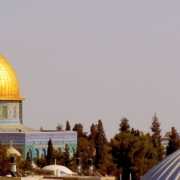
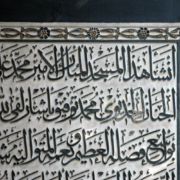
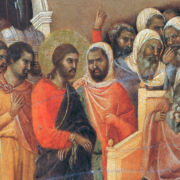
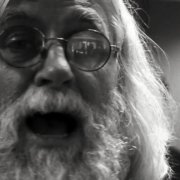


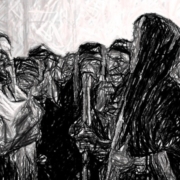


Trackbacks & Pingbacks
[…] The Jihad of Jesus (Part 3): Jesus as the Supreme Example […]
Comments are closed.